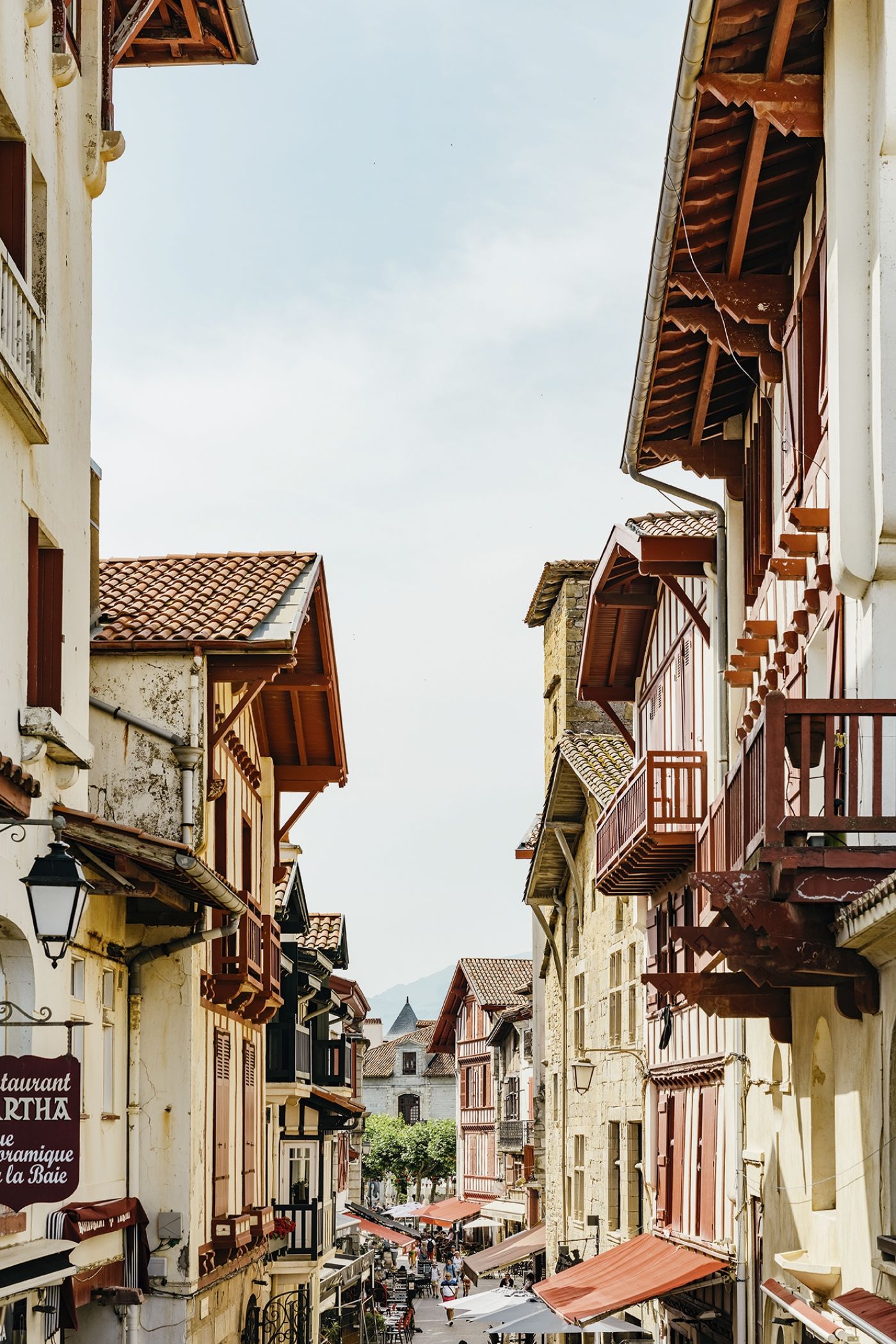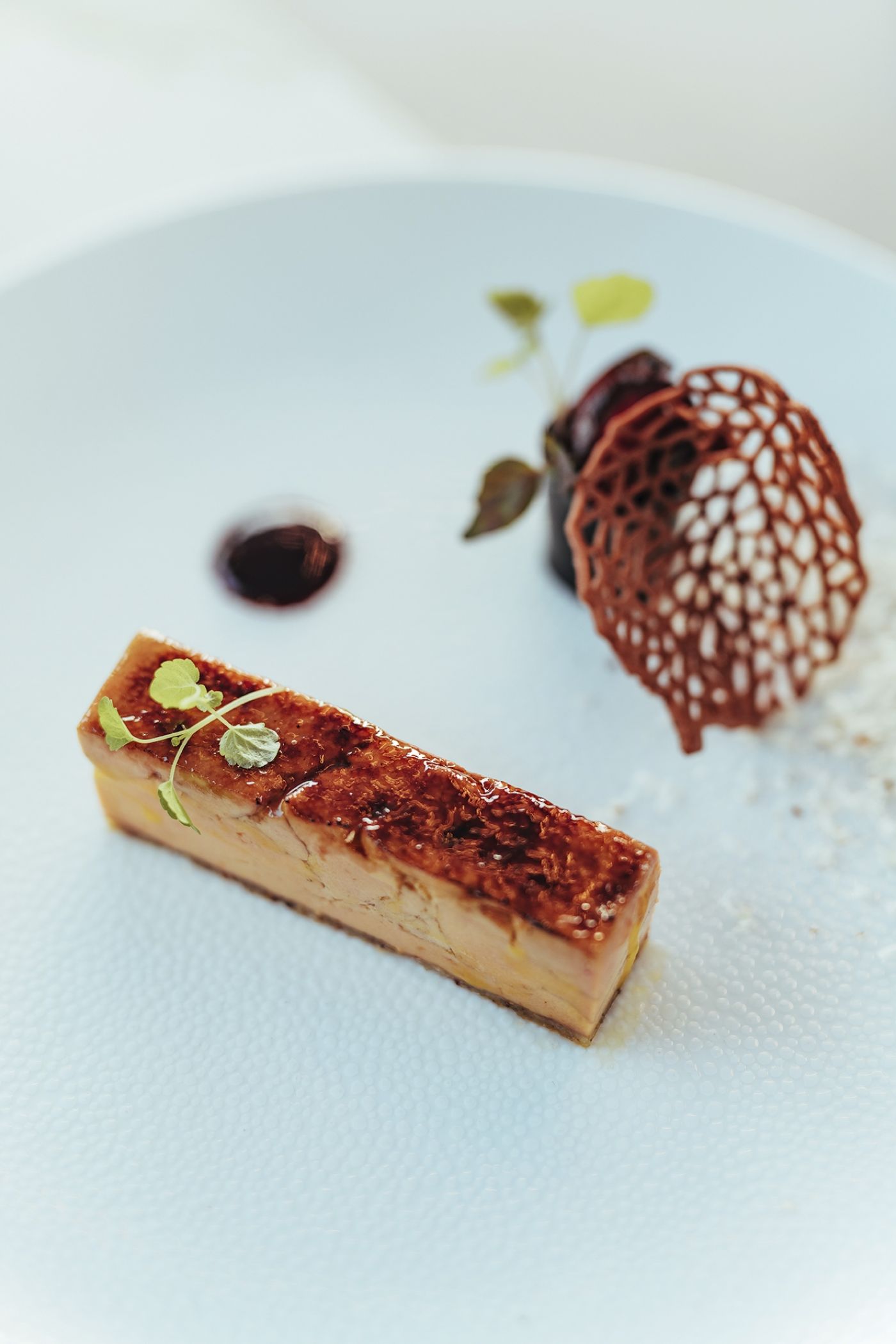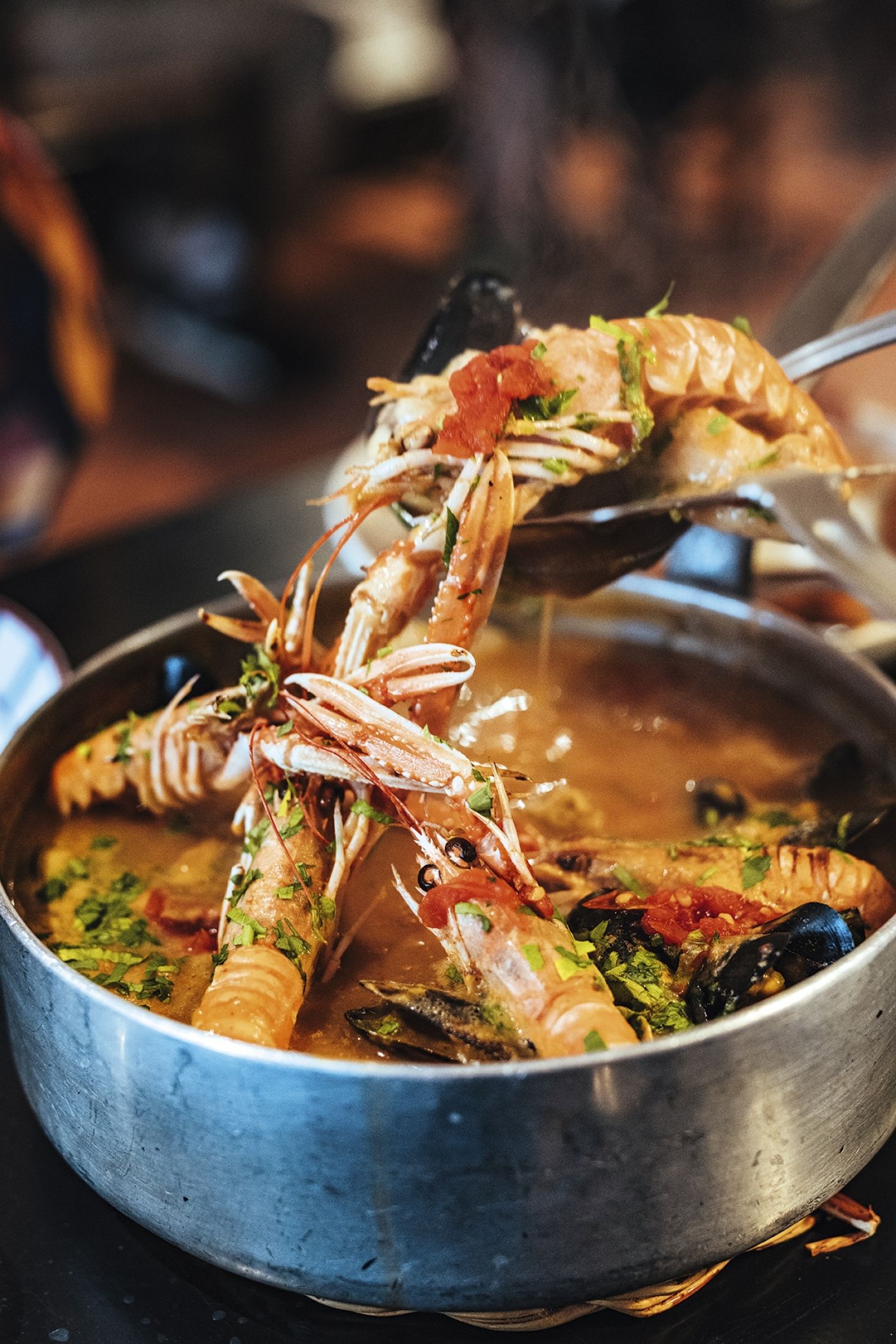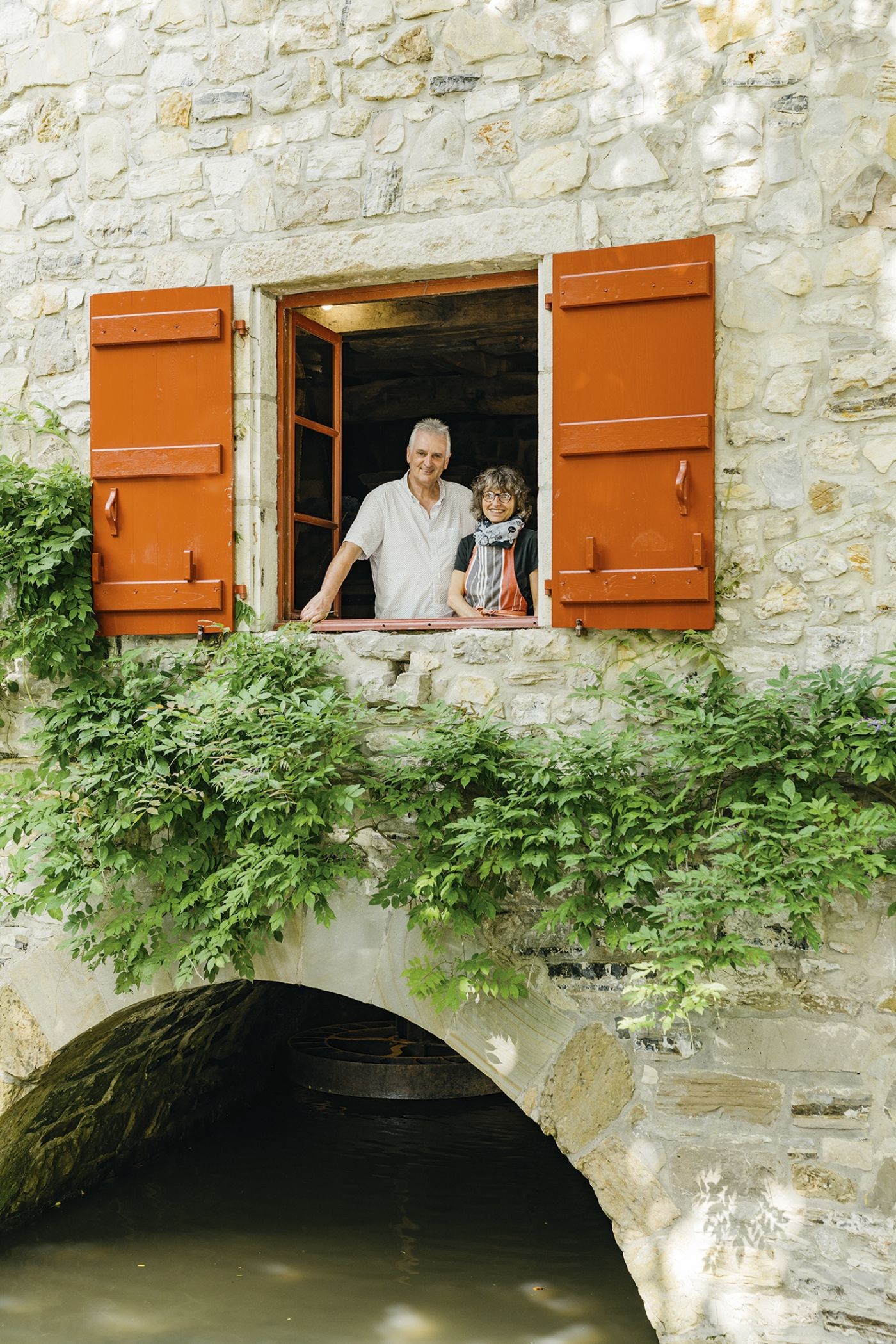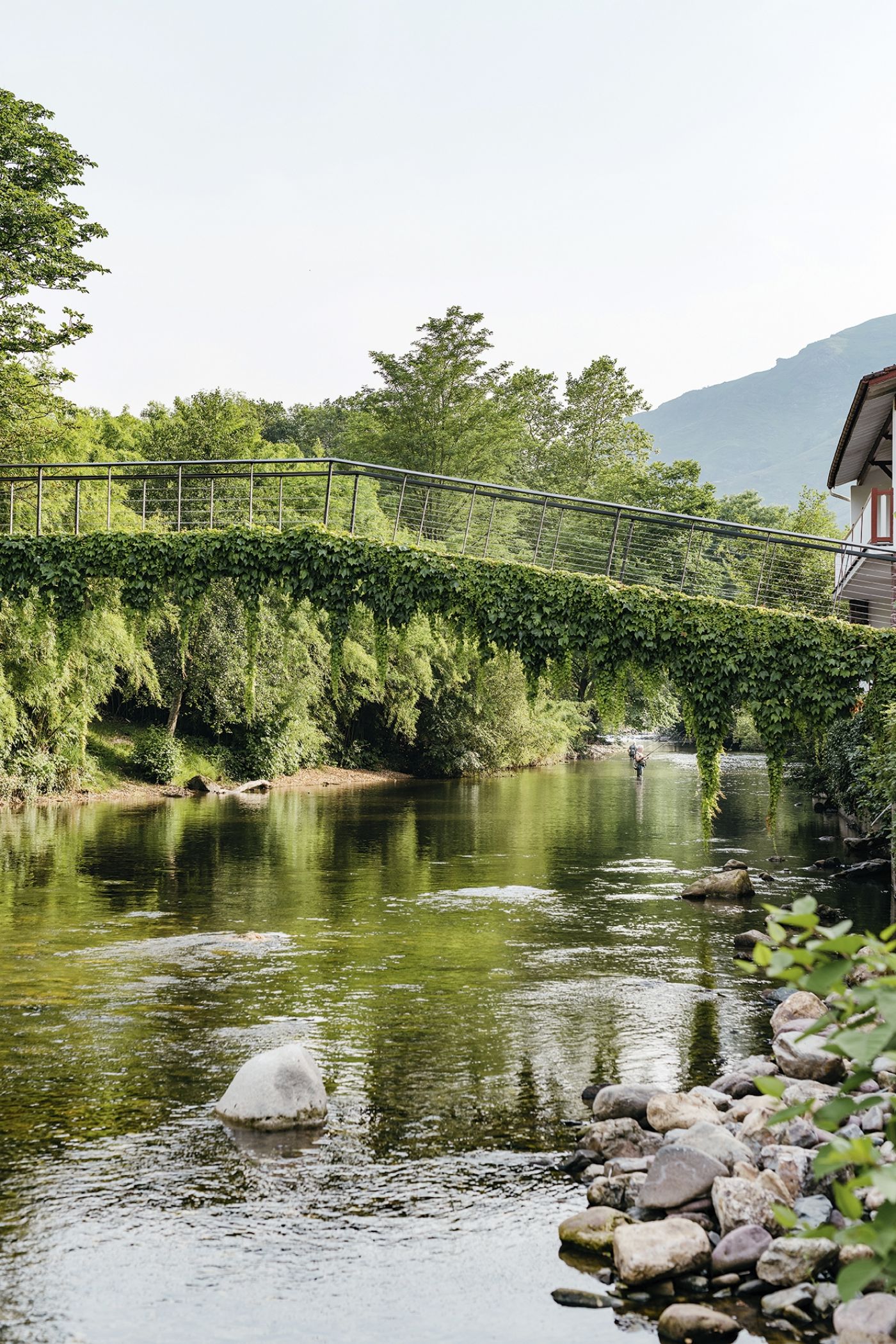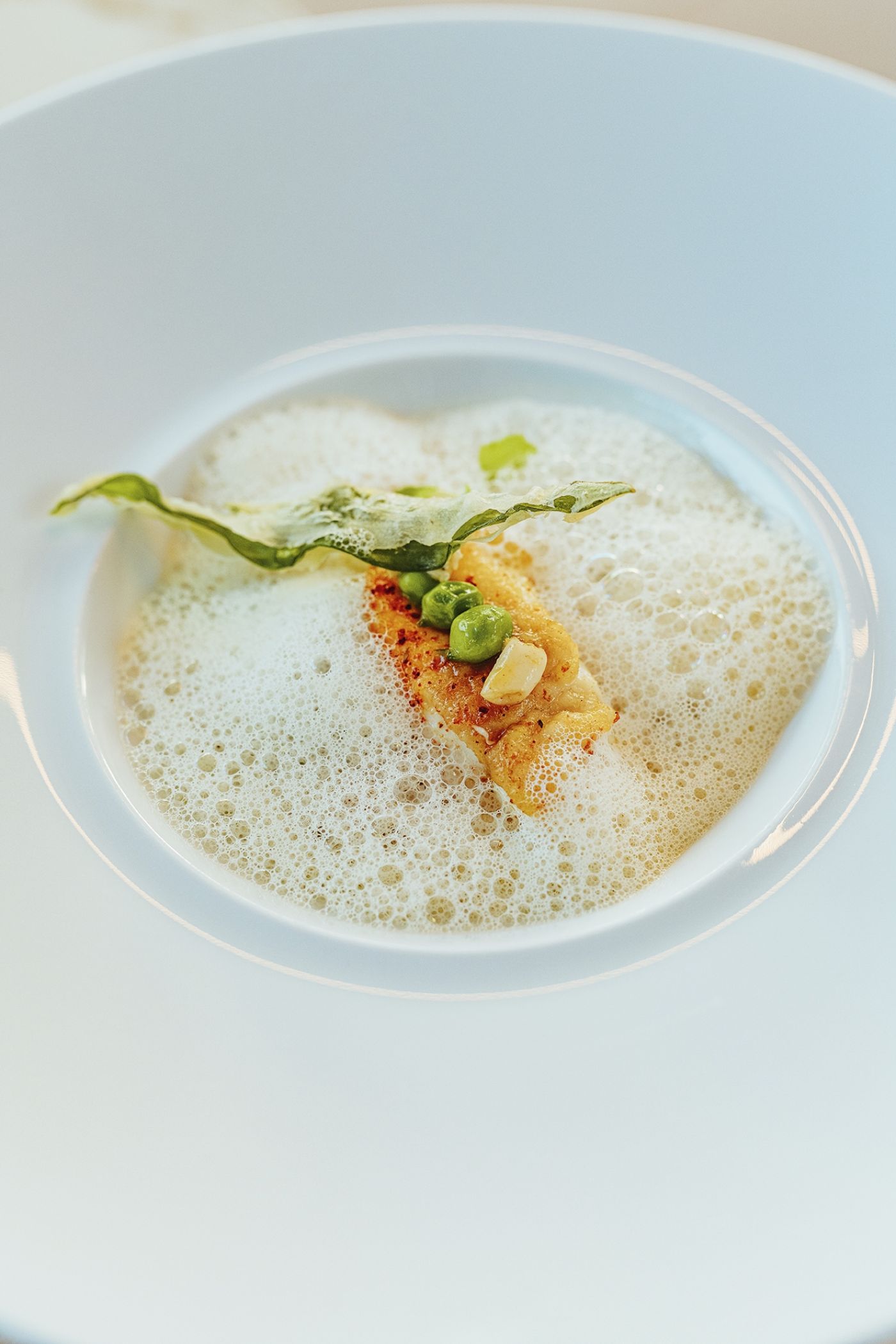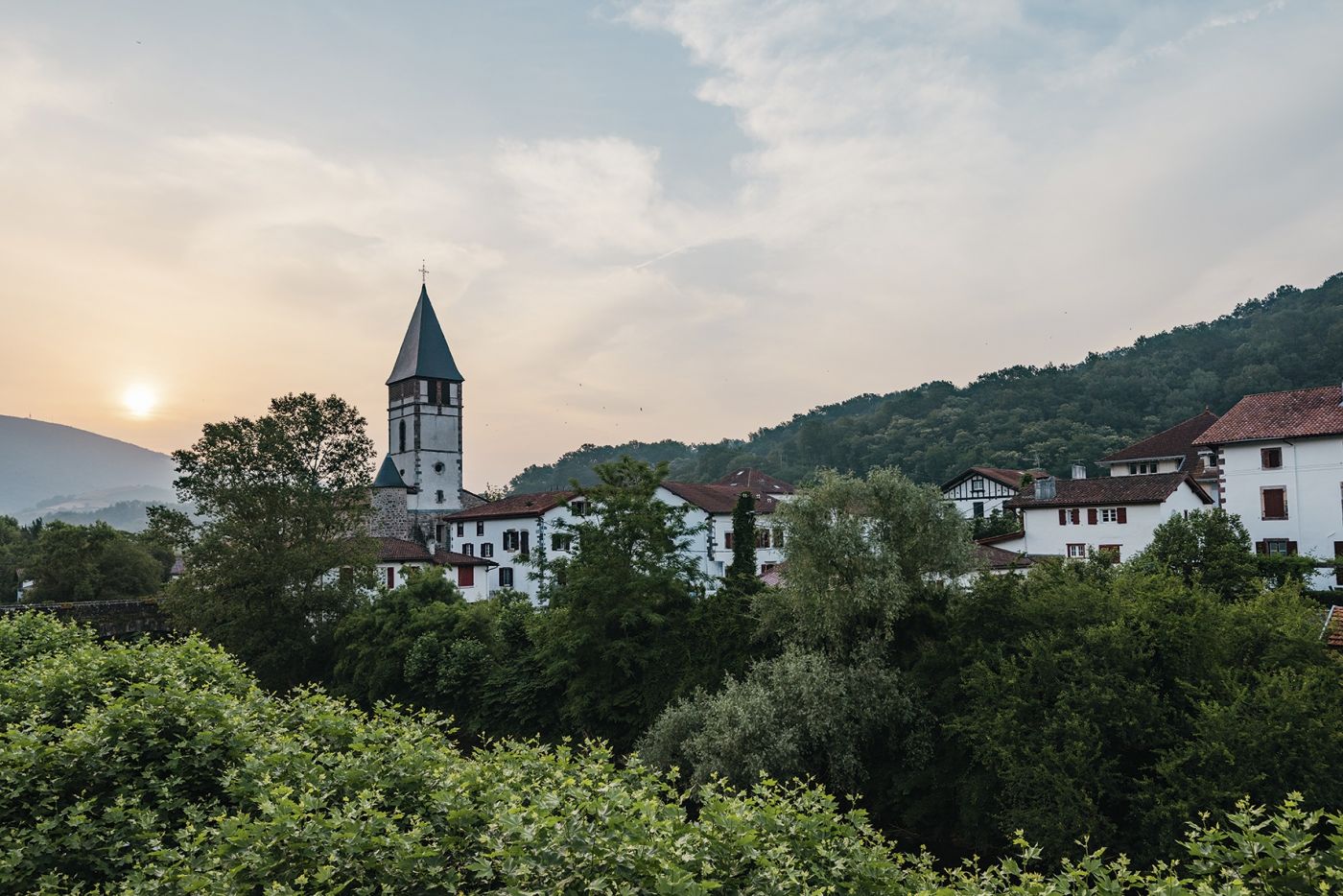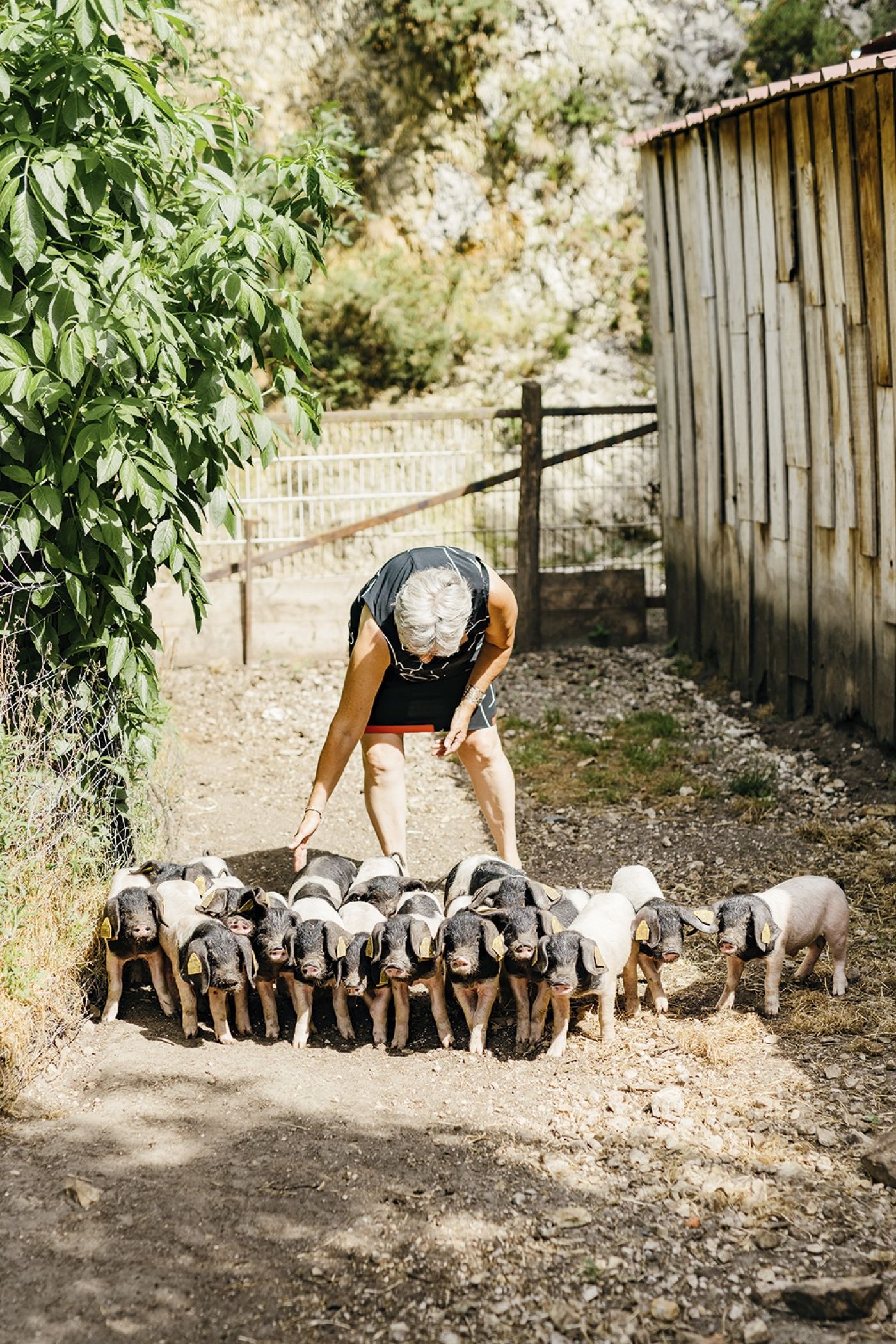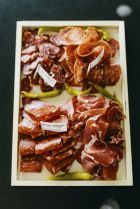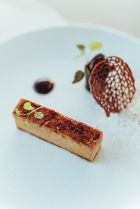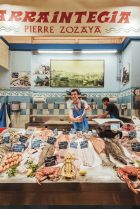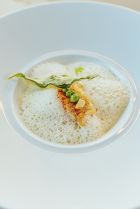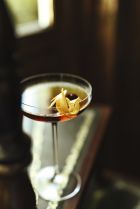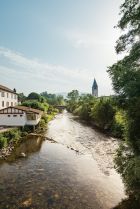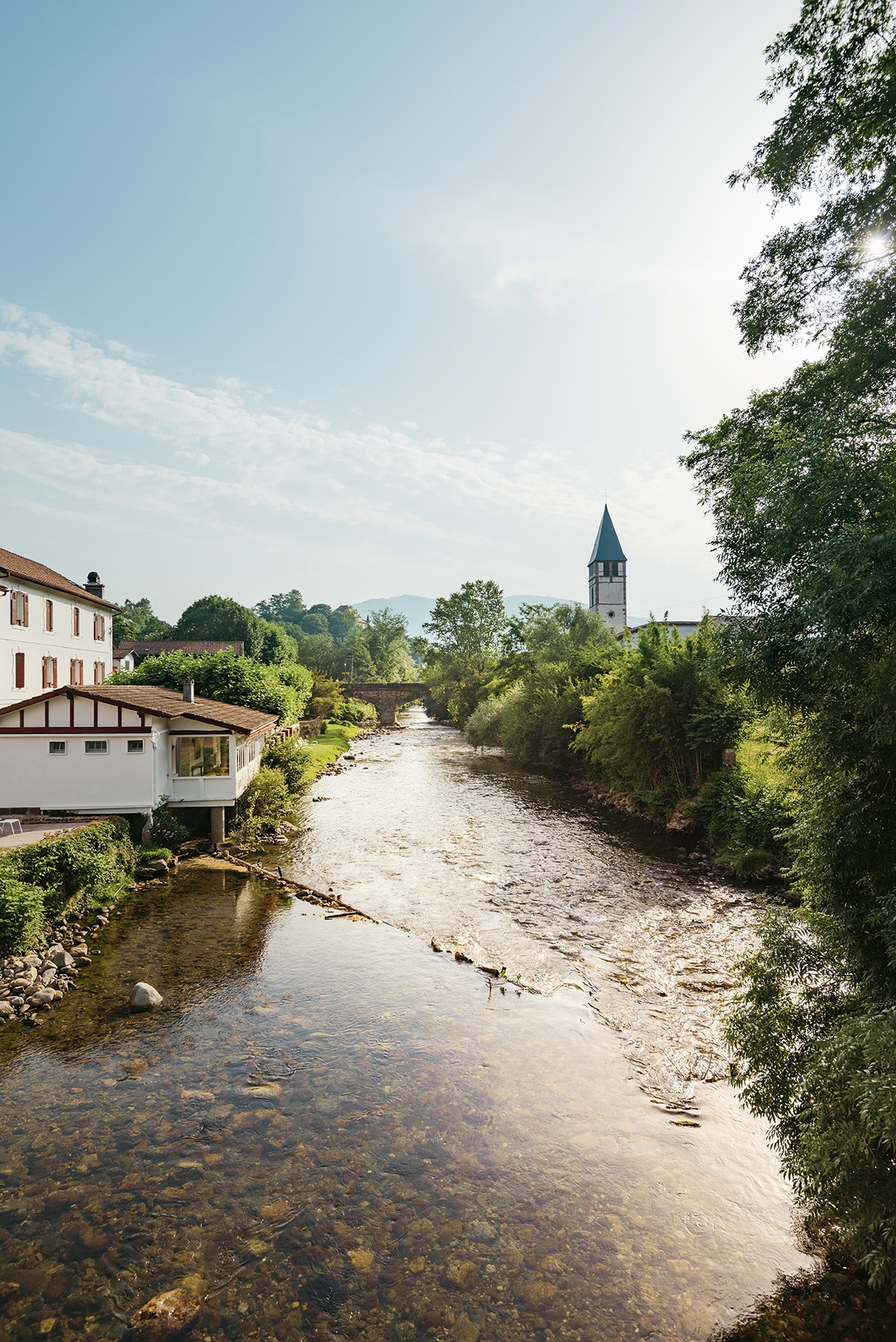
Food and Travel Review
'With the sea on one side, the Pyrénées on the other, and so much space and sunsine, the local larder is impressive. It's easy to let Biarritz and the entire Pays Basque reel you in and charm, feed and water you for however much time you have'
There’s something almost surreal about Biarritz. It’s partly the light which, even on cloudy days, seems to bathe everything in the slightly exaggerated tones of a Seventies Polaroid snap. It’s partly the occasional flash of the Basque font on shop fronts and signs which, with its curious, jaunty air – like a more bearable precursor to Comic Sans – wouldn’t have looked out of place above a coffee bar in Sixties Soho. And it’s partly the people you’re likely to pass by – a fine mix of locals, tourists, the wellheeled, the workers, the silver-haired, the surfers…
But it’s also the look of the town itself, which spreads over several bays and headlands and manages to mix architectural styles with gleeful abandon. The modern. The belle époque. The industrial. The residential. The occasional house that could have come from an English village. A royal palace. Europe’s oldest golf course. A tiki bar and street food court. A 12th-century Catholic church… and a 19th-century Russian Orthodox one too.
Perhaps, though, it’s this very dreamlike quality that means Biarritz and, for that matter, its charming neighbours, coastline and surrounding countryside, aren’t as well celebrated by food tourists as they thoroughly deserve to be. As part of the Basque Country, that proudly independent stretch that straddles Spain and France, this region has much to boast of, but I’ll bet an entire burnt cheesecake that, on hearing the word ‘Basque’, your thoughts go to San Sebastián rather than Biarritz. In terms of reputation, the two couldn’t be further apart and yet, in terms of motorway, there’s barely 45 minutes between them.
You could very easily split your time, however short, between the two. But then you could also, just as easily, let Biarritz – and the entire Pays Basque – reel you in, charm and feed and water you to quite delightful levels for however much time you have.
As one might imagine, with the sea on one side, the Pyrénées on the other, and so much space and sunshine, the local larder is impressive. ‘In Paris, we have nothing; we have to go and find the food and bring it in,’ says restaurateur Éric Martins of local bistro Marloe. ‘Here, it is all around us.’
The Biarritz Marloe is sister to the Paris Marloe which, in turn, is the bistro version of L’Arôme, the Michelin-starred restaurant opened by Éric and his wife Johanna in 2006.
'This is an area rooted in tradition and terroir, but not frozen in time: modern techinque is happily accepted although the joy taken in local ingredients is palpable'
Lunch at this Marloe, from chef Anthony Ruffet, is excellent and, while the dishes themselves – carpaccio, houmous, sashimi – are more bistro than Basque, they certainly prove the quality and versatility of the local ingredients, supplied by the manifold producers credited on the menu.
This same formula for gastronomic excellence pops up across the region, at all levels, from the enormously enjoyable Palmito food court – with its assorted world street food plus alarmingly potent tiki cocktails on offer – to the Michelin-starred Briketenia, just down the coast at Guéthary, and La Table d’Aurélien Largeau, at the glamorous Hôtel du Palais in the centre of Biarritz. This is an area rooted in tradition and terroir, but certainly not frozen in time: here, world influences are allowed free rein, and modern technique is happily accepted, although at all points the joy taken in the local ingredients is palpable. Take hotel breakfasts, for just one example, where bacon is notable by its absence, but instead you will find crisp, fried Bayonne ham.
The region’s history is palpable too. The Hôtel du Palais was built in 1854 by Emperor Napoleon III as Villa Eugénie, a tribute to his wife, who adored Biarritz and the Basque coast. Indeed, the hotel is actually built in the shape of an ‘E’ (although you do wonder if he’d have done the same if she’d been called Xanthe). Their marriage is interwoven with Pays Basque, as it was their patronage and love of the region that originally took Biarritz from low-key fishing village to smart holiday resort.
Older royal history plays a part too. At the wedding of Louis XIV and Infanta Maria Theresa of Spain, in the neighbouring town of Saint-Jean-De-Luz in 1660, local bakery Maison Adam presented the couple with macarons, and they’re still enormously popular today. As befits the Basque spirit, local macarons are no-nonsense and straightforward: beige, chewy and very almondy, and arguably far more addictive than the modern, multi-coloured version the word macaron normally brings to mind. While typically served singularly, like a biscuit – more macaroon than macaron – a sandwich version is available and is known, rather charmingly, as a mouchou, the Basque word for ‘kiss’.
Maison Adam continue to trade to this day, and from the same site. They’ve expanded a little – the right-hand side is the modern extension, the left the 17th-century original – but they still offer macarons and other sweet specialities, especially gâteau Basque, the region’s most popular cake. It’s everywhere, from those hotel breakfast buffets to Michelin-starred dessert menus and all culinary points between. It’s also a wonderfully simple thing: sweet, texturally somewhere between cookie and pie, and flavoured with either a hint of cherry jam or a thin layer of crème pâtissière. It’s hard to pick a favourite version but the one from Moulin de Bassilour is perhaps the most romantic, coming from a working water mill, where you can watch them grind their own flour.
While on the subject of sweeter things, chocolate also plays a major part in Basque history. Biarritz has places such as Miremont, which opened in 1872, making it the city’s oldest tea room, chocolaterie and pâtisserie (Alain Ducasse, who was born nearby, is a big fan, apparently). Saint-Jean-de-Luz has shops such as La Maison Pariès, currently run by the fifth and sixth generations of the founding family. Even so, they pale against neighbouring town Bayonne, which punches far above its weight on many fronts – there aren’t many towns that have given their name to a style of ham as well as a military blade – but, particularly, on chocolate.
The first mention of chocolate in Bayonne dates back to 1670, but that likely came via nearby Spain, which first brought cacao to Europe from South America. By 1854, however, Bayonne had become the ‘chocolate capital of Europe’, with some 34 chocolate makers/shops operating in the city.
These days, Bayonne doesn’t quite have that number, but still impresses with the range available. One of the most interesting is Monsieur Txokola. A pure bean-to-bar maker – ‘no ganache, no bonbons, just tablet’, explains co-founder Cyril Pouil – you can watch the small-scale production process in-store. Their single estate chocolate is excellent: ‘We never mix the beans,’ adds Cyril. But perhaps the most interesting is their Biarritz 1900 bar. ‘We call it a réinterprétation du chocolat ancestral,’ he says. ‘It’s unrefined, it’s unconched, and made in the manner of that era.’ The results are intriguing: grainier than today’s generally smoother concoctions and with a pleasing hint of menthol and peppery warmth.
Of course, Cyril is not the only person keeping traditions alive in this region. At Chez Mattin, in a back street of Ciboure – the quieter town the other side of the port from St-Jean-de-Luz – the Basque spirit is alive, well and delicious. Compact, dark and unfussy, Chez Mattin is a restaurant that marches to its own, straightforward, classically Basque rhythm.
In France everything is complicated,’ says owner Céline Niquet, ‘so we just take it day by day.’ Ttoro, a classic tomato-based stew of langoustines, hake, monkfish and mussels flavoured with Espelette pepper – the region’s most famous spice – is prepared by chef Michel Niquet, Céline’s husband, over wood fire. It’s pure, rich, punchy. The accompanying croutons pack way more garlic than their size suggests, and the whole thing is magnificent. Throughout lunch, their dog Nala sleeps contentedly at guests’ feet – her bed is by the tables and she clearly sees no reason to move. As Céline clears the plates, she tips her head towards Nala. ‘She is one of us,’ she says, with a smile. ‘We want la vie tranquille.’
Head into the countryside of Pays Basque and la vie tranquille feels like a very easy thing to achieve here. The scenery is frequently spectacular, from the hidden coves and charming little beaches, to lush green valleys, rivers and streams, and the backdrop of the Pyrénées, including La Rhune, the range’s westernmost peak, which locals are keen to point out. ‘Seeing it means we’re home,’ one of them explains. It’s all quite magical – so much so, frankly, that at Arcé hotel and restaurant the idyll almost borders on cliché. There’s a pretty bridge, a church; house martins skim the river that runs alongside the property; and local men fish as dinner is served on the terrace under the shade of 100-year-old plane trees.
'Ttoro, a classic tomato-based stew of langoustines, hake, monkfish and mussels flavoured with Espelette pepper – the region's most famous spice – is pure, rich and punchy. The accompanying croutons pack way more garlic than their size suggests'
By day, if you follow the same locals, you might find yourself somewhere up a mountain on the hunt for pigs. Pierre Oteiza is a name you’ll see all across the region, both in his own stores and on menus, and his charcuterie is so good it deserves to be feted. On a day when Pierre is occupied entertaining members of the Porsche Owners Club – after enjoying the windy roads of the area, the club have chosen his Aldudes shop, the centre of the Oteiza business, as a stop on their rally – his wife Catherine leads a tour of the surrounding hillside, where the pigs roam.
Looking down on Aldudes, she says, ‘The pigs need space, they need to run outside. It takes more time and it’s more expensive. But,’ she adds with a shrug, ‘it’s better.’ The pigs roam 15 hectares of the mountain, Catherine explains. ‘Each hectare must have grass and forest as the pigs eat the fruit of the forest, the chestnuts.’ Which goes considerable way to explaining the quality of the resulting charcuterie produced by Orteiza.
Once the pigs have reached the desired weight, around 140kg, they begin what Catherine euphemistically calls ‘the transformation process’ and here, at Oteiza, like the best of Ibérico, that process is natural, rather than industrial. In the vast drying room, for example, which holds some 45,000 legs, humidity is controlled by opening a window. The results speak for themselves and lunch, accompanied by glasses of Irouléguy – what Pierre describes as ‘the smallest producer in France and the largest in the region’ – is a memorably simple and flavoursome affair.
And it’s one of many such meals. Whether uncomplicated or elaborate, the true nature of the Basque Country always shines through. Perhaps the finest example of the region’s larder and spirit is found at Pavillon du Phare, in the shadow of Biarritz’s lighthouse, where you can sample local hams, sheeps’ milk cheeses, oysters or a perfect octopus and potato salad. While you eat, large numbers of locals will probably gather on the cliffs to watch the sun set over the Bay of Biscay. There are teenagers, pensioners, family groups, courting couples. The difference is their ages (and the quality of the alcoholic beverage they’ve brought), but they are united by the fact that they’ve all climbed over the cliff fence right by the signs ordering you not to. As a metaphor for a region that’s justifiably proud of what it’s got, and that does it mostly on its own terms, it’s rather elegant.
Words by Neil Davey. Photography by Mark Parren Taylor.
Food and Travel travelled courtesy of Biarritz Tourisme and Pays Basque. tourisme.biarritz.fr tourisme64.com
Where to stay
Hôtel des Basses Pyrénées A hotel for over a century, much of the building dates back beyond that, with modern architecture cleverly incorporating a 13th-century stone tower. Facilities and service, however, are everything you’d expect from a 21st-century hotel. The owners’ sons run the F&B: one heads up the kitchen, one the cocktail bar and both are at the top of their game. Doubles from £112. 13 rue Tour de Saul, Bayonne (by car), 00 33 5 59 25 70 88, hoteldesbassespyrenees.com
Itsas Mendia Tucked between Biarritz and Saint-Jean-de Luz in the village of Bidart, and a short walk to the beach, this simple but appealing hotel is set in a sprawling Twenties building, with large balconies and terraces and fine swimming pool. Doubles from £139. 11 avenue de la Grande Plage, Bidart, 00 33 5 59 54 90 23, hotelbidart.com
Palmito Biarritz Where surf culture meets France. Basic but charming – in their words, ‘a flip-flop’s throw from the beach’ – and family owned for four generations, each one putting their own new spin on proceedings. Most recently that’s the addition of a dangerously enjoyable tiki bar and street-food market opposite. Doubles from £148. 7 rue du Port Vieux, Biarritz, 00 33 5 5924 1656, palmito-biarritz.com
Regina Experimental Biarritz A belle-époque clifftop landmark whose 72 rooms, restaurant, bar and spa have been redesigned with interiors nous from Parisian designer Dorothée Meilichzon, with nods to liner-style curves and references to the town’s nautical heritage, in time to receive guests this month. Great location at the quieter end of Biarritz, with views of the sea and lighthouse (and sunset). Doubles from £219. 52 avenue de l’Impératrice, Biarritz 00 33 5 59 41 33 00, reginaexperimental.com
Travel Information
Bay of Biscay in the west of the Pyrénées-Atlantiques department. It’s surrounded by several equally fascinating towns, such as Bayonne (regarded as the capital of Pays Basque). Time is one hour ahead of GMT and currency is the Euro. There are several flights available daily from the UK’s key airports to Biarritz.
GETTING THERE
easyJet flies from London Gatwick to Biarritz Airport, with a flight time of around two hours. easyjet.com
Ryanair offers direct flights to Biarritz from London Stansted Airport, with a similar flight time. ryanair.com
RESOURCES
Biarritz Tourisme is your go-to source for up-to-date traveller information and everything you need plan your trip. tourisme.biarritz.fr
En Pays Basque and Pays Basque are full of ideas for things to do across the broader region, including hiking routes, places to stay, beaches and where to eat and drink. en-pays-basque.fr tourisme64.com
Visit Bayonne also has a host of information if you want to extend your visit to Bayonne, including art and culture, sports and activities and the
area’s festivals. visitbayonne.com
Where to eat
Prices are an average per person for three courses excluding drinks, unless otherwise stated
Arcé The menu at Pascal Arcé’s hotel and restaurant – family-run for five generations and counting – proudly lists multiple local suppliers, from the origins of the flour to the pigs’ trotters. Cooking is robust but elegant and allows the hero ingredients – such as trout from their pond – to take the staring role. £50. Route du Col d’Ispéguy, Saint-Étienne-de-Baïgorry, 00 33 5 5937 4014, hotel-arce.com
Briketenia The region – as on the Spanish side of the border – is dotted with Michelin-starred places. Briketenia, run by father and son Martin and David Ibarboure, has held such status for 25 years, turning the local larder into culinary art, with a good-value ‘market’ lunch. 4-course lunch menu,
£42. 142 rue de l’Église, Guéthary, 00 33 5 5926 5134, briketenia.com
Chez Mattin If you only have time for one meal, this is probably the one. Chef Michel Niquet runs the kitchen and his wife Céline runs the front of house. Reservations are marked by Post-it notes on your table. The food is pure Basque, there’s a heavy seafood focus, and the ttoro – a traditional fish soup laced with Espelette pepper, served with the crispest of garlic heavy croutons – will change your life. £50. 63 rue Evariste Baignol, Ciboure, 00 33 5 5947 1952, chezmattin.fr
La Table d’Aurélien Largeau For a gastro flit across Basque Country and the wider region, Michelin-starred Aurélien Largeau serves up tasting menus featuring the likes of Saint-Jean-de-Luz sardines and his signature version of ttoro, beside panoramic ocean views. 7-course tasting menu, £134. Hôtel du Palais, l’Avenue de l’Impératrice, Biarritz 00 33 5 5941 6420, latabledaurelienlargeau.com
Maison Balme Alongside a multitude of local produce at Biarritz’s impressive Les Halles market, Maison Balme is a good value celebration of the truffle, using it to elevate simple dishes such as charcuterie and omelettes. Truffle omelette, £7. Rue des Halles, 00 33 5 47 02 79 64, maisonbalme.com
Marloe The Basque-based sister bistro to the popular Parisian one, itself the lower-key version of the same team’s Michelin-starred L’Arôme based in the capital. Chef Anthony Ruffet celebrates the Basque larder through international dishes to fine effect. £60. 45 avenue du Président J F Kennedy, Biarritz, 00 33 5 5922 3498, marloe-biarritz.fr
Miremont Founded in 1872, the oldest tea room in Biarritz – the Basque Bettys, if you will – has interior design references to Morocco, Napoleon III
and Queen Victoria, plus excellent chocolates, pastries and Basque cake in myriad forms. Hot drink and a pastry, around £17. 1B place Georges
Clemenceau, Biarritz, 00 33 5 5924 0138
Pavillon du Phare With sunset providing the sort of lighting that turns us all into Instagram experts, this unpretentious hut with outdoor seating and
stunning views opens for breakfast, lunch and dinner from April to November, subject to weather. The dinner menu skips around French and Spanish Basque Country with charcuterie, cheese and simple seafood. No reservations. £40. 60B Esplanade Elisabeth II, Biarritz, pavillonduphare.business.site
Puyodebat Since opening his first shop in Bayonne in 1999, chocolatier Christope Puyodebat has been looking forward in terms of innovation, and backwards to revive the tasse à moustache (moustache cup) for hot chocolate. You have to stir/whisk by hand, but the results are well worth it. Hot chocolate with chocolate bites, £12. 27 place Georges Clémenceau, Biarritz, 00 33 5 5924 5614, chocolats-puyodebat.com
Food Glossary
- Axoa
- A Basque speciality made with minced meat – veal would be the most traditional – with Espelette pepper, onion and garlic
- Confiture de cerises
- The cherry jam heart of the gâteau Basque and the most traditional of local jams
- Gâteau Basque
- A simple cake – flour, sugar, eggs, milk and butter – sometimes served plain but more often with an added layer of cherry jam or crème pâtissière
- Irouléguy
- The region’s only AOC certified wine
- Marmitako
- Fish stews figure large and this one, of tuna, potatoes, onions, peppers and tomatoes, served with bread, is a basic but hearty meal
- Ossau-Iraty
- The star cheese of the region – a hard, sheeps’ milk variety with a slightly nutty flavour, made in the Pyrénée
- Piperade
- Slow-cooked onion, green peppers and tomatoes, a bit like a local version of ratatouille but with a kick from Espelette pepper
- Piquillos
- Small, sweet peppers that are often served stuffed with a variety of ingredients, such as tuna, goats’ cheese, or piperade
- Ttoro
- A very particular medley of fish and seafood cooked in fish stock with vegetables and aromatic herbs and flavoured, once again, with Espelette pepper
Get Premium access to all the latest content online
Subscribe and view full print editions online... Subscribe


